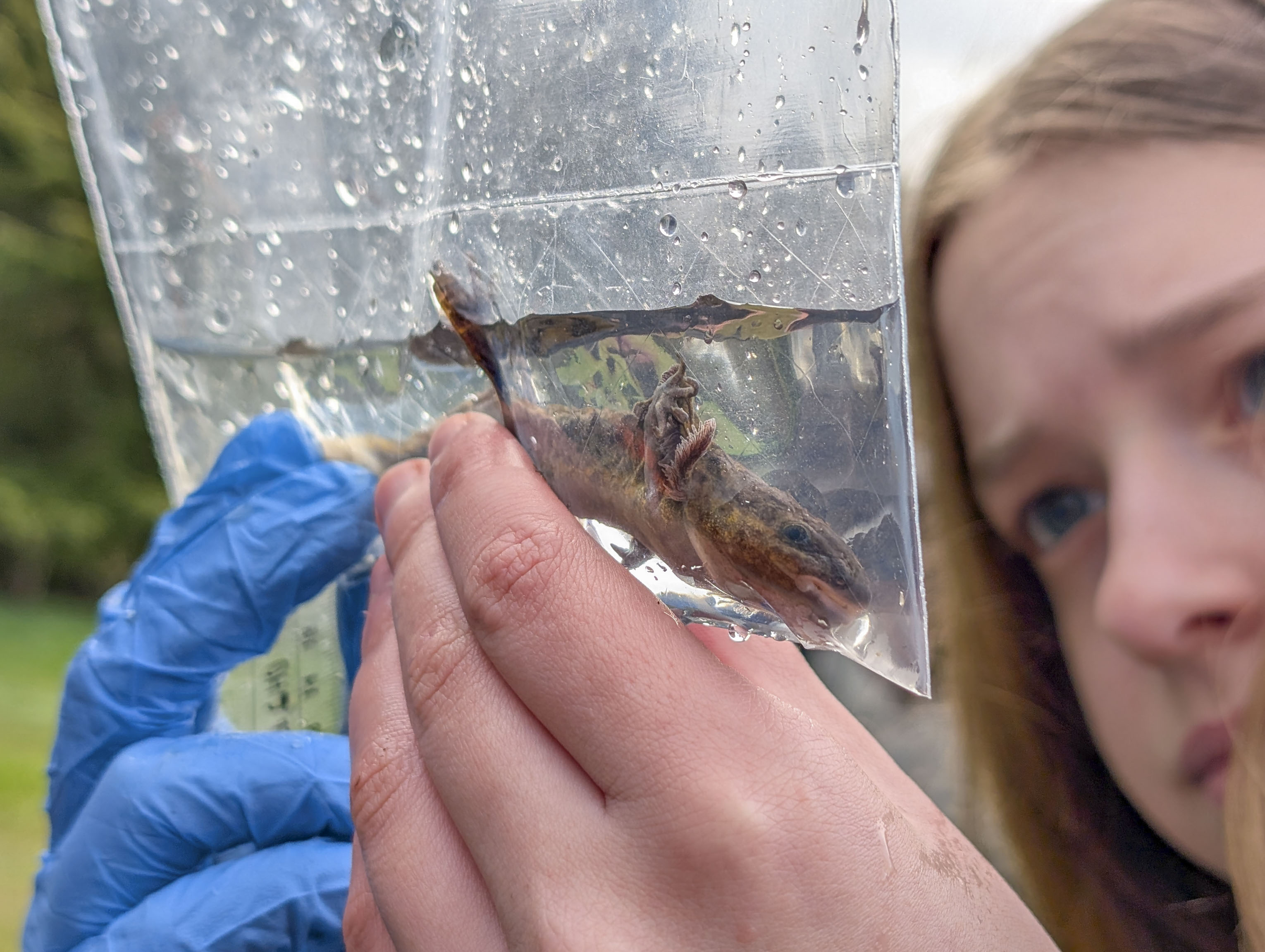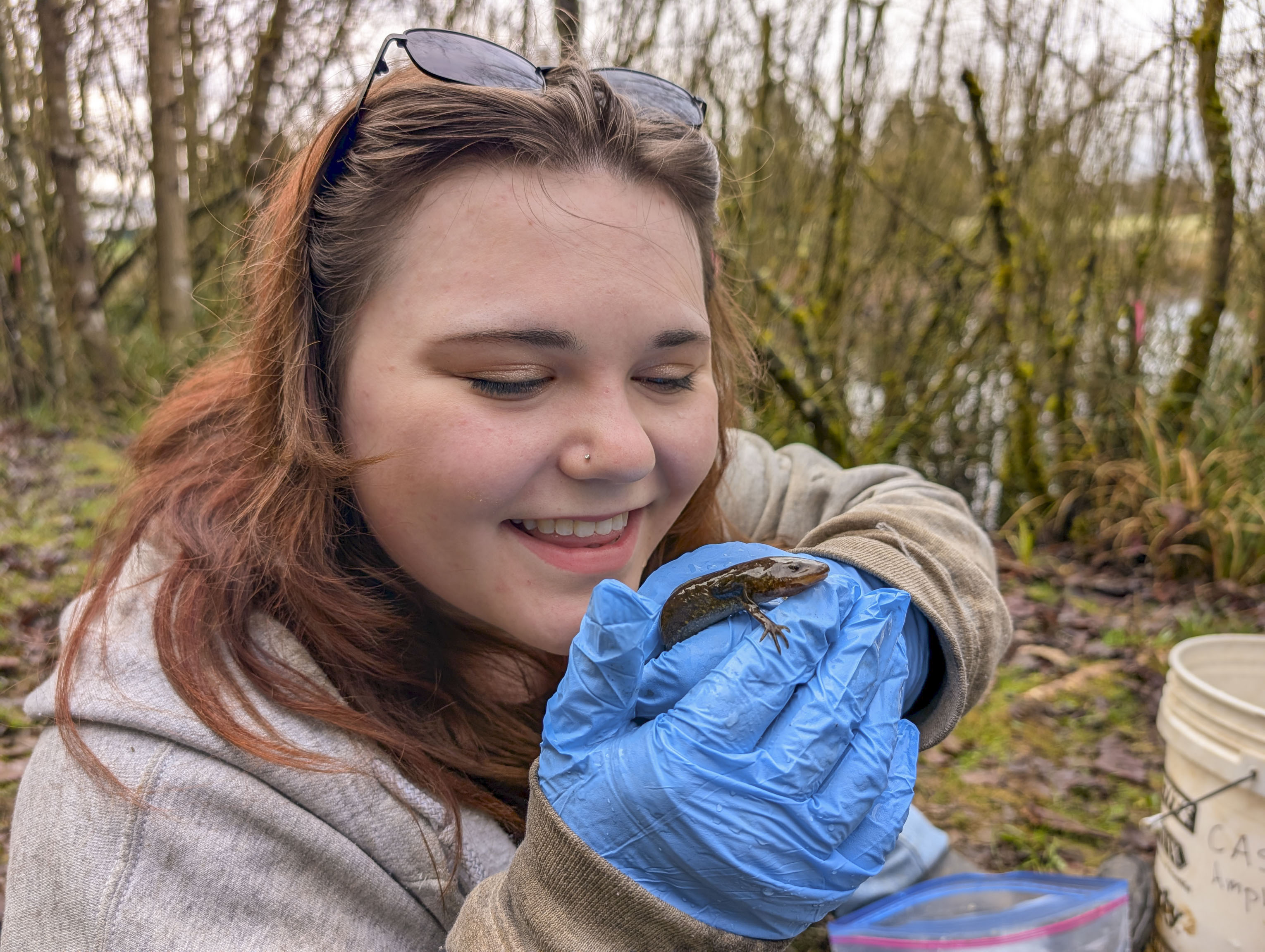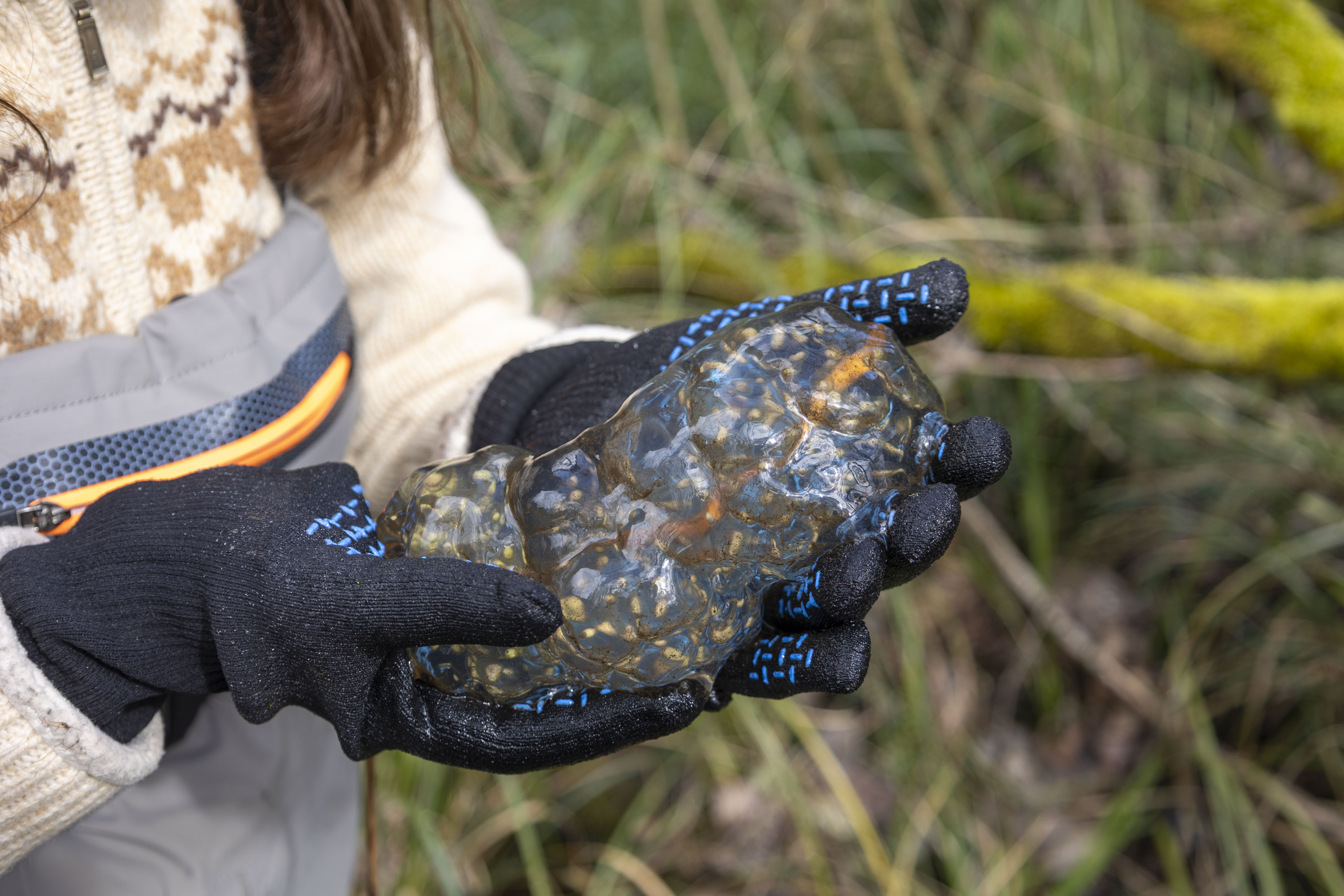On a drizzly morning in March, students from the Center for Agriculture, Science and Environmental Education put on wading gear, grab their equipment and trudge out to a pair of manmade ponds on their 80-acre outdoor learning campus in Brush Prairie. There, they wade in and recover traps set up the previous week, carefully cataloguing and tagging whatever they find.
“The purpose of the study is to look for the presence/absence of amphibian species in our two ponds and to track amphibian populations over time,” said Irene Catlin, environmental sciences teacher with CASEE. “Amphibians are sensitive to environmental changes, so they are excellent bioindicators.”
This year marked the 20th for the annual pond survey, started in cooperation with Charlie Crisafulli, a research ecologist in the U.S. Forest Service Pacific Northwest Research Station.
“We do have a robust data set,” Catlin said. “Twenty years of data can allow us to really see the big picture of how amphibians are doing in our own backyard over time.”
Learn more about the study and an all-day amphibian summit happening at the CASEE campus on Thursday, May 8.







